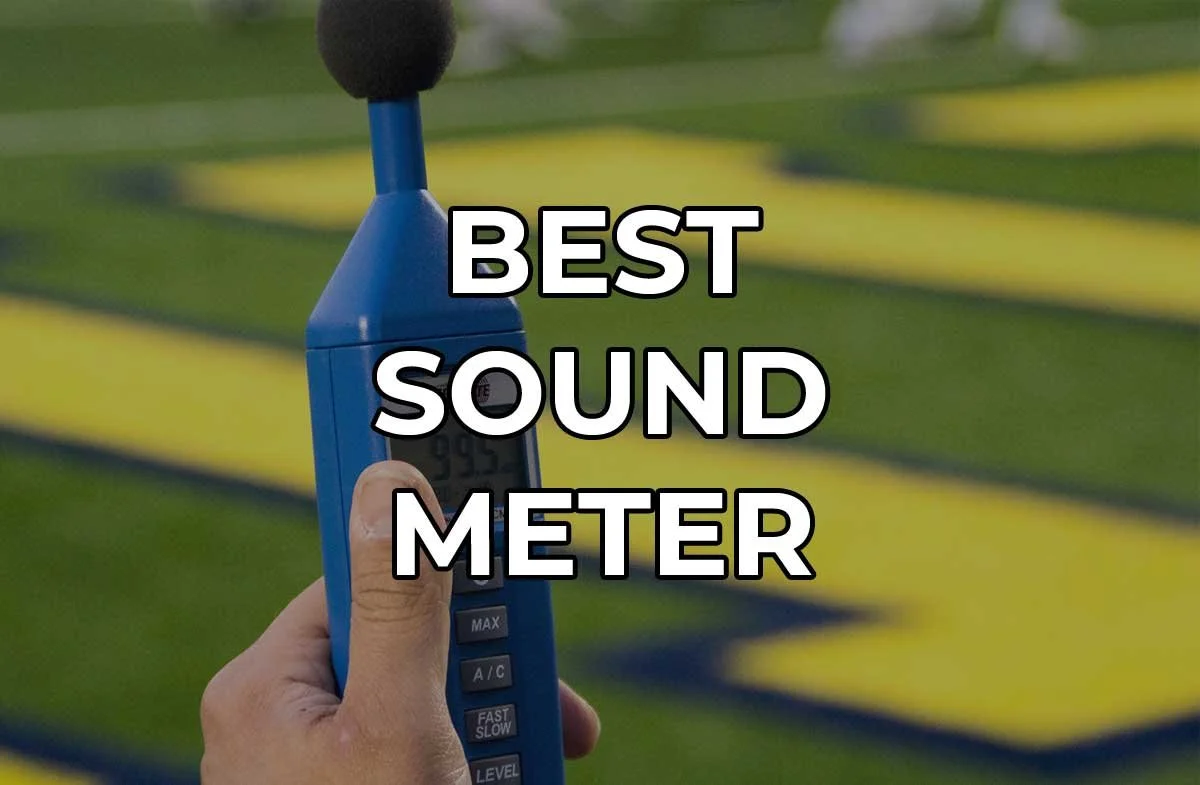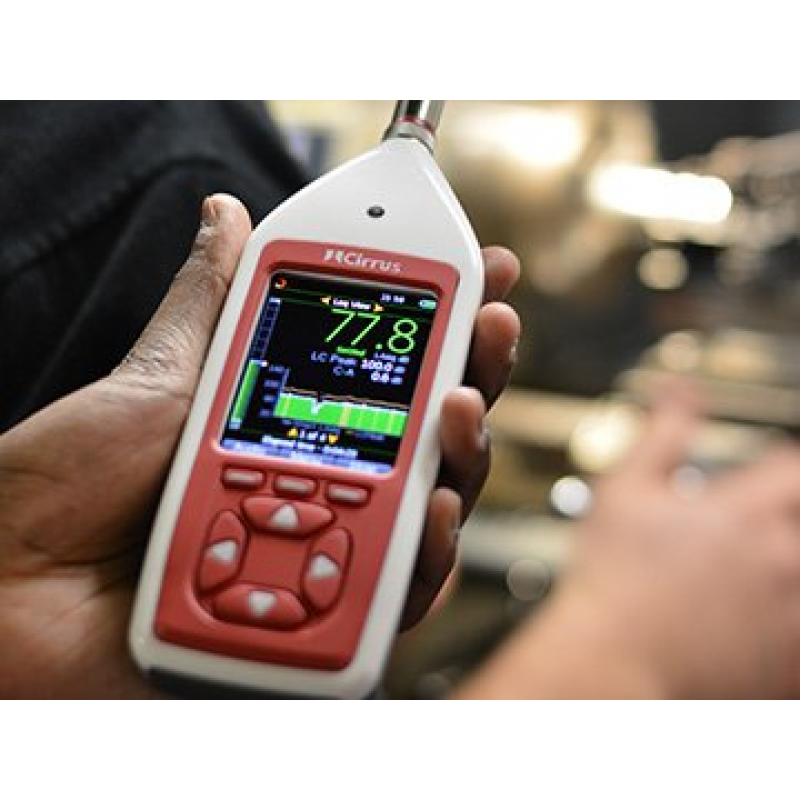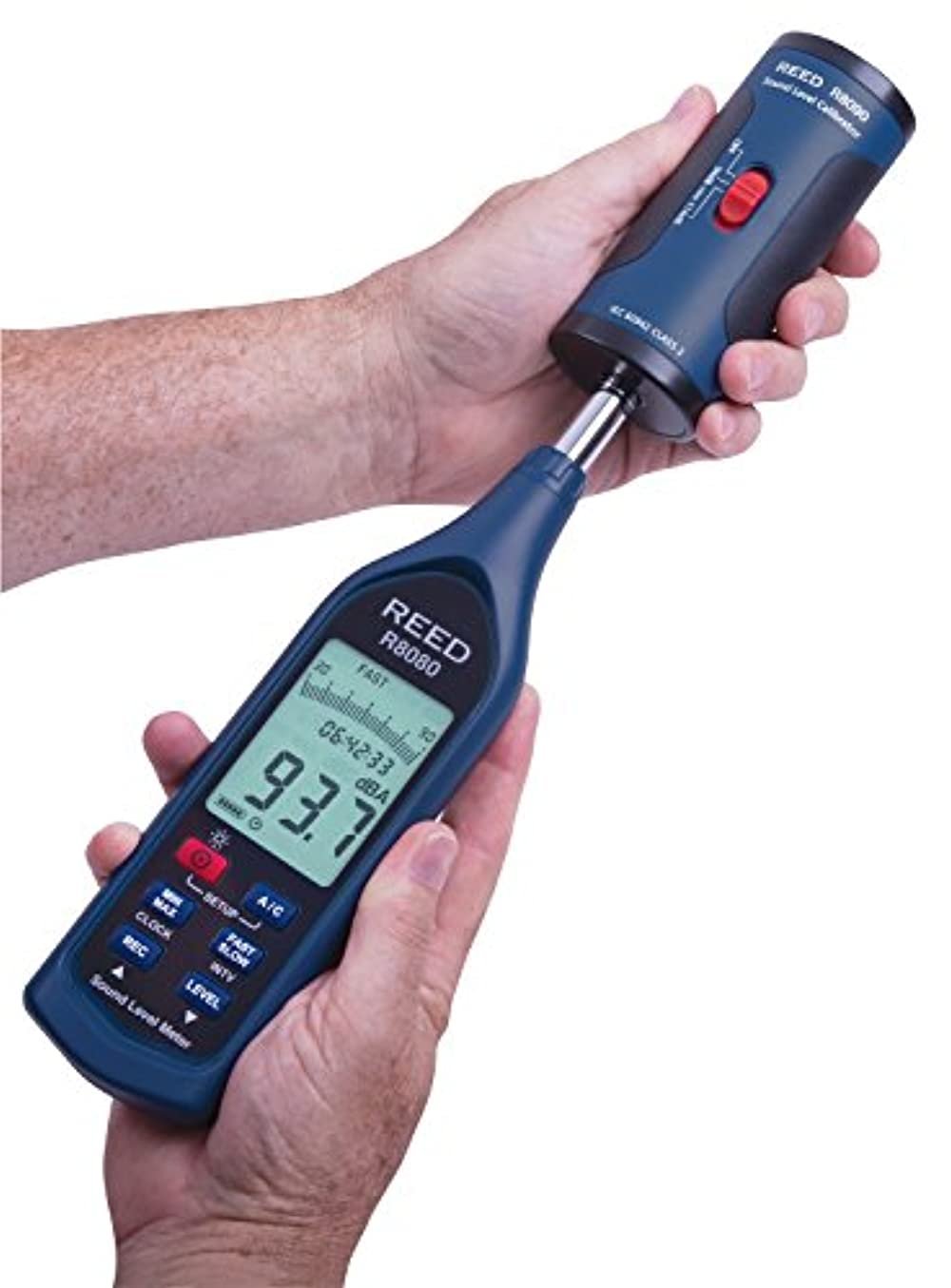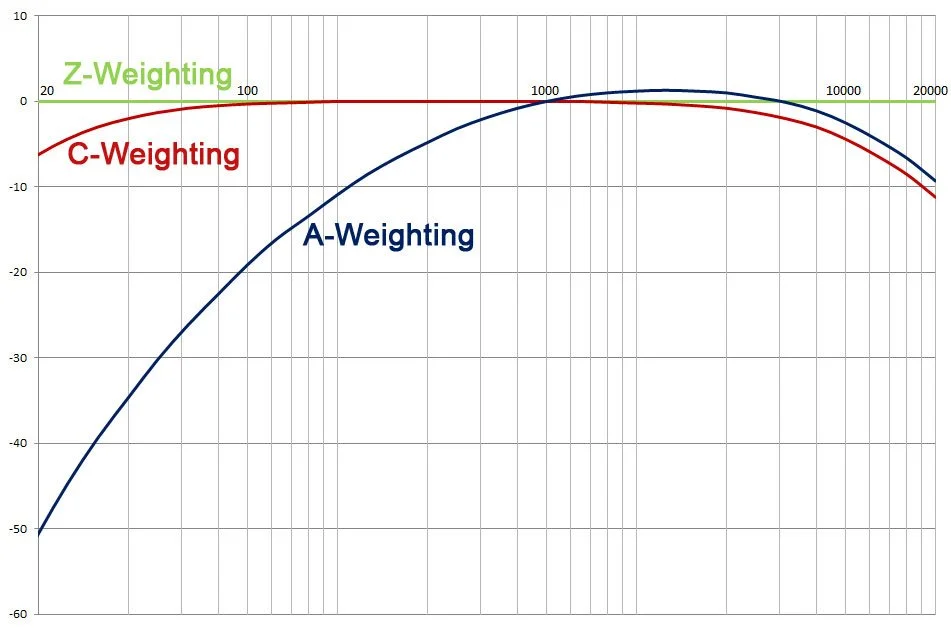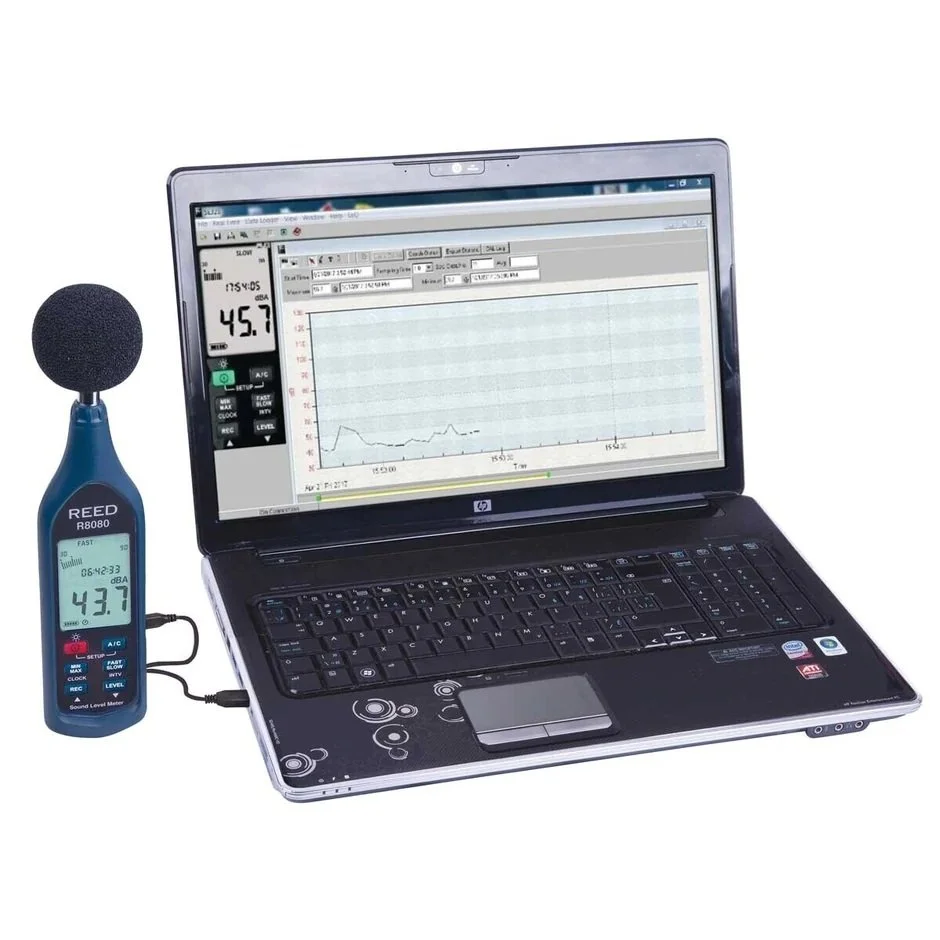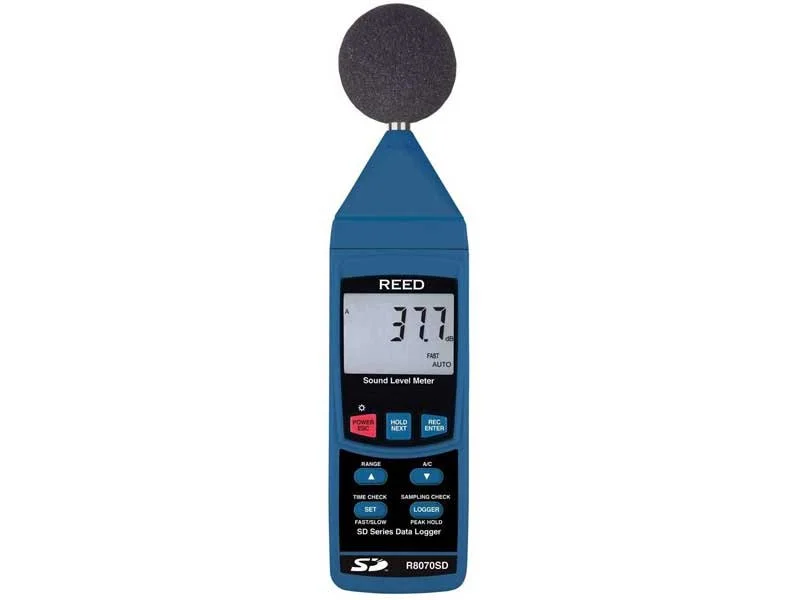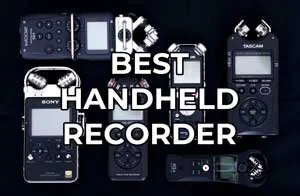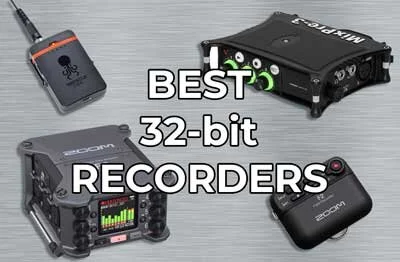Best Sound Level Meter (That Actually Records Data)
Learn about the different types of sound level meters and which one is the best in this article.
Sound level meters are fantastic tools for measuring how loud environments are.
This article specifically investigates the best sound level meters capable of recording data.
It’s important to make this distinction because most sound level meters don’t record anything and simply display the live dB measurement.
If you need a sound level meter for casual observations and don’t need to produce reports and graphs of your data, save your money and download a free app like Decibel.
Best Overall:
REED 8080
The REED 8080 is the best overall sound level meter thanks to its large internal memory and compact size.
Using its fastest sample rate, it can store data for 18 hours.
What Is A Sound Level Meter?
A sound level meter, also called a sound pressure level meter (SPL), is a device that measures how loud sounds are.
They work by using a calibrated microphone to detect changes in decibel (dB) levels.
The accuracy of a sound level meter is designated by its “Class” or “Type” specification.
For more detailed information, please see this Wiki Article.
Difference Between Class and Type For Sound Level Meters
Example of a Type 1 sound level meter.
The “Type” or “Class” of a sound level meter classifies how accurate it is, as defined by a set of standards.
“Type” is the older term for classification but is still widely used by sound level meter manufactures.
Type/Class 1 sound level meters are more accurate than Type/Class 2 meters.
Sound level meters use a set of tolerance standards from the International Electrotechnical Commission (IEC) for determining accuracy across a range of frequencies.
The following tables represent the latest sound level meter standard, IEC 61672-3.
Type 1 & Class 1 Sound Level Meters:
| Frequency | Accuracy |
|---|---|
| 31.5 Hz | ± 2.0 dB |
| 63 Hz | ± 1.5 dB |
| 125 Hz | ± 1.5 dB |
| 250 Hz | ± 1.4 dB |
| 500 Hz | ± 1.4 dB |
| 1 kHz | ± 1.1 dB |
| 2 kHz | ± 1.6 dB |
| 4 kHz | ± 1.6 dB |
| 8 kHz | ± 5.2 dB |
Type 2 & Class 2 Sound Level Meters:
| Frequency | Accuracy |
|---|---|
| 31.5 Hz | ± 3.0 dB |
| 63 Hz | ± 2.5 dB |
| 125 Hz | ± 2.0 dB |
| 250 Hz | ± 1.9 dB |
| 500 Hz | ± 1.9 dB |
| 1 kHz | ± 1.4 dB |
| 2 kHz | ± 2.6 dB |
| 4 kHz | ± 3.6 dB |
| 8 kHz | ± 5.6 dB |
As you can see, “Type 1” and “Class 1” meters are 1-2dB more accurate that “Type 2” and “Class 2” meters.
How Loud Is A Decibel?
Decibels are a unit of measure used to quantify sound intensity.
The decibel scale is logarithmic, meaning that every 10 decibels represents a change in acoustic intensity by a factor of 10.
For example, 10dB is 10 times more intense than 0dB and 20dB is 100 times more intense than 0dB.
Every 10dB increase in intensity roughly doubles the perceived loudness of a sound.
So how different are Class 1 and Class 2 sound level meters?
Not very.
Their difference of ± 1-2dB in accuracy across the frequency spectrum is so small, the human ear has difficulty telling the difference.
For this reason, Class 1 sound level meters are only used for laboratory measurements when extreme accuracy is mandatory.
How To Calibrate A Sound Level Meter
Image showing calibration process.
Sound level meters are calibrated by using a standardized, 94dB sine wave.
The sine wave is played by a calibrator directly into the sound level’s microphone and the sound level meter is adjusted until it shows a reading of exactly 94dB.
How often should you calibrate your sound level meter?
To ensure accuracy, calibrating your sound level meter once per year is recommended.
This REED Calibrator (Amazon Affiliate Link) will fit any sound level meter with a 1/2” maximum microphone diameter with an accuracy of ± 0.5dB.
Sound Level Meter Uses
Sound level meters are most commonly used for measuring decibel levels in work environments to determine if the relative loudness is safe for humans.
They’re most commonly used in:
industrial plants
road and rail traffic
construction sites
Most noise safety standards recommend using ear protection when exposed to environments with a dB level ≥ 85dB for 8 hours or longer.
See the below table for hearing loss thresholds for specific dB levels.
| Noise Exposure | Hearing Loss After Duration |
|---|---|
| 80 dB | Safe |
| 82 dB | 16 Hours |
| 85 dB | 8 Hours |
| 88 dB | 4 Hours |
| 91 dB | 2 Hours |
| 94 dB | 1 Hour |
| 97 dB | 30 Minutes |
| 100 dB | 15 Minutes |
| 103 dB | 7.5 Minutes |
| 106 dB | < 4 Minutes |
| 109 dB | < 2 Minutes |
| 112 dB | < 1 Minute |
| 115 dB | 30 Seconds |
| 118 dB | 15 Seconds |
| 121 dB | 7 Seconds |
| 124 dB | < 4 Seconds |
| 127 dB | < 2 Seconds |
| 130 dB | < 1 Second |
| Above 140 dB | Instant Hearing Loss |
Frequency Weightings For Sound Level Measurements
Sound level meters will often offer the choice to apply frequency weighting curves to the readings.
These weighting curves can make for more applicable measurements for specific circumstances.
Common weighting curves include:
A-Weighting - the same frequency response as the human ear. Cuts off most sounds below 500 Hz and above 8 kHz.
C-Weighting - mimics the frequency response of the human ear at higher intensity levels of around 100dB.
Z-Weighting - a flat frequency response with no weighting between 10 Hz - 20 kHz.
A-weighting is the most commonly used weighting curve because it only takes into consideration frequencies that the human ear is sensitive to.
C-weighting is used in extremely loud environments where the human ear is more sensitive to lower frequencies.
Z-weighting is used when the total dB level across all frequencies is needed.
Most sound level meters will have A and C-weighted curves to choose from.
Why Is Data Logging Important?
If you want to do any kind of analyzation of your decibel data, generate graphs or have solid proof of your readings, it’s important that your sound level meter can record the data for later use.
Most sound level meters will only display the live reading. If you want to have any kind of record of the measurements, you’ll have to write them down or photograph the display while recording.
Neither of these methods is accurate and will be subject to skepticism.
All of the sound level meters recommended below are capable of recording data for later analyzation via software.
Best Sound Level Meters
The recommended sound level meters below all support data logging and are Type/Class 2 meters.
Best Overall: REED 8080
The REED 8080 is the lightweight version of the 8070SD without SD card support.
Using the internal, 1MB memory, it can store 64,000 data points.
With a 1 second sample rate, this is good for almost 18 hours of data logging.
The 8080 is thinner and lighter than the 8070SD (below) and requires less batteries (x4 AAA).
If you’re looking for a well-built sound level meter capable of recording up to 18 hours of data, the REED 8080 is the best option out there.
Pro:
smaller and lighter than the 8070SD
requires x4 AAA batteries
Con:
AAA batteries are lower capacity than AA’s
SPECIFICATIONS | Accuracy | Type 2 |
| Measuring Range | 30 - 130 dB |
| Internal Memory | Yes (1MB) |
| Expandable Memory | No |
| Frequency Weighting | A, C |
| Selectable Sampling Rate | Yes (between 1s and 60s) |
| Power Supply | 4 x AAA Batteries |
| Dimensions | 10.4 x 2.5 x 1" |
| Weight | 8.8oz (245g) |
Best For Long Recordings: REED 8070SD
The REED 8070SD is a Type 2 sound level meter capable of recording dB data to an SD card.
With a 16GB card installed (the maximum supported size) the 8070SD can store over 1 billion dB readings!
When using a sample rate of 1 reading per second, you can record data for 32 years straight!
With virtually no cap on recording times, the 8070SD is perfect for making many, long recordings at multiple locations before returning home for analyzation.
Additionally, the x6 AA batteries give the 8070SD insane battery life. I’ve run mine on 2000mAh batteries for over 48 hours straight. And that’s in recording mode!
Downsides to the 8070SD are its x6 AA batteries and large size.
Pro:
you’ll never run out of storage space
long battery life
Con:
large and bulky
requires 6 AA batteries
SPECIFICATIONS | Accuracy | Type 2 |
| Measuring Range | 30 - 130 dB |
| Internal Memory | No |
| Expandable Memory | 16GB SDHC |
| Frequency Weighting | A, C |
| Selectable Sampling Rate | Yes (1, 2, 5, 10, 30, 60, 120, 300, 600, 1800, 3600 seconds) |
| Power Supply | 6 x AA Batteries |
| Dimensions | 9.7 x 2.7 x 1.8" |
| Weight | 0.7lbs (320g) |
Budget Option: PCE-322A
The PCE-322A from PCE Instruments is an affordable sound level meter with data logging support.
The internal 0.5MB memory can store 32,700 data points.
There is only one sample rate option: 2 samples per second.
While this will yield high density data, it means the PCE-322A can only store 4.5 hours of dB data.
Downsides to the PCE-322A are its large size and heavy weight.
Pro:
cheaper than other options
only requires a 9v battery
high data density (2 samples/second)
Con:
bulky and heavy
relatively small storage capacity
SPECIFICATIONS | Accuracy | Type 2 |
| Measuring Range | 30 - 130 dB |
| Internal Memory | Yes (0.5MB) |
| Expandable Memory | No |
| Frequency Weighting | A, C |
| Selectable Sampling Rate | No (0.5s) |
| Power Supply | 1 x 9v Battery |
| Dimensions | 11.02 x 3.74 x 1.77" |
| Weight | 0.78lbs (350g) |
Final Thoughts
After weighing all the options, I decided to purchase a REED 8070SD.
Although it’s relatively big and heavy, the ability to record many hours worth of data is necessary for my use.
I use the 8070SD for making dB recordings for my volunteer work for Quiet Parks International.
Have any questions? Feel free to ask in the comments below. Sometimes people aren’t notified when I respond, so try checking back occasionally. I usually respond within 48 hours.
Support Acoustic Nature
If you enjoyed this post and would like to help support Acoustic Nature, please consider "buying me a coffee" or becoming a Patreon with the buttons below.
As a thank you for your support, Patreon supporters receive a copy of Field Recording For Beginners, exclusive access to the full Behind The Sounds video series, nature sound library downloads, and more.
If you are unable to support the site financially, please share this post with others, or leave a comment below letting me know you enjoyed this post! Both are free and help the website grow. Thank you ♫
Thanks for reading,
-Jared

